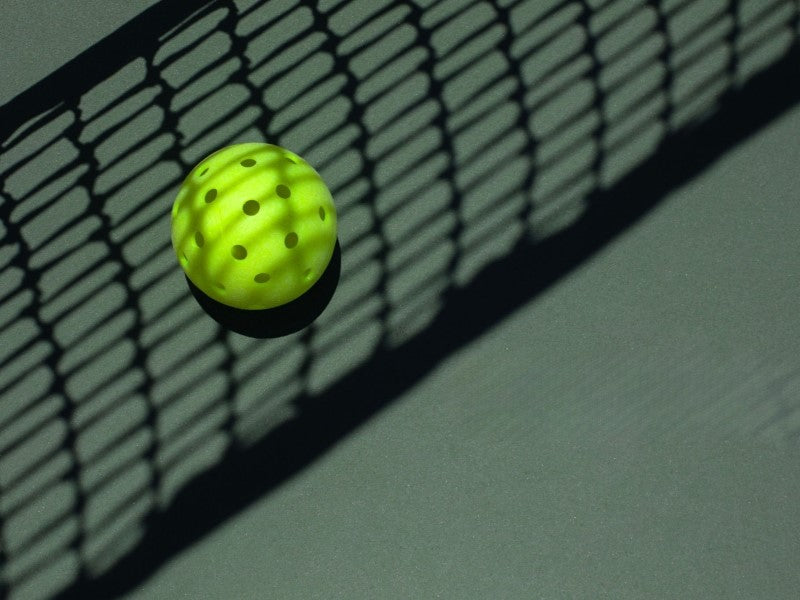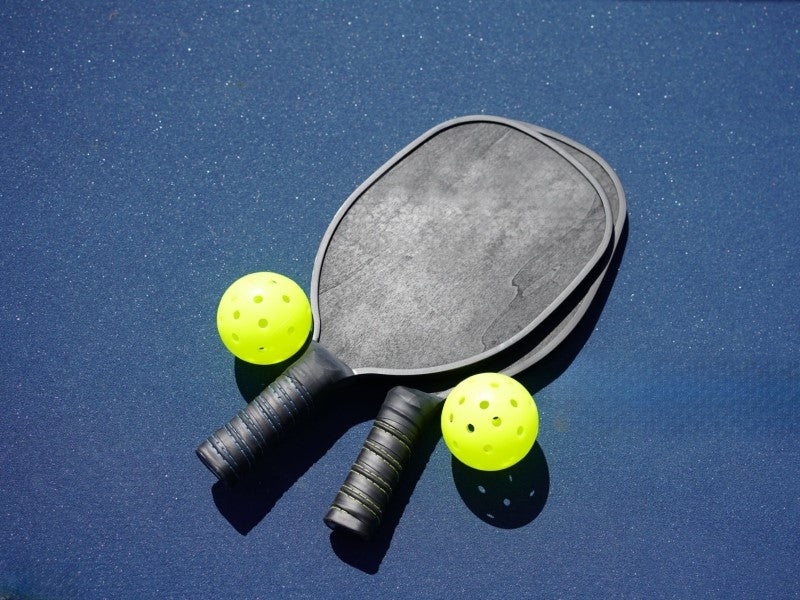In pickleball, how you hold your paddle can either elevate your game—or sabotage it before the rally even begins. While many beginners focus on flashy shots or buying the latest gear, few realize that improper grip mechanics are the root cause of inconsistent serves, weak volleys, and painful wrist strain.
Whether you're a brand-new player or someone stuck at the intermediate level, mastering how to hold a pickleball paddle is a foundational skill. It impacts every single shot you make: your control, spin, power, and even your body mechanics.
Common Mistakes When Holding a Pickleball Paddle
Before we get into the correct grip, let’s look at what players often get wrong. Most of these mistakes seem small but can result in big problems.
1. Gripping Too Tightly
This is by far the most common beginner error. Holding the paddle like a baseball bat not only restricts wrist movement but also kills your ability to generate spin or soft touch.
Why it’s a problem: A tight grip reduces flexibility, leading to stiff shots and increased joint fatigue.
2. Holding the Paddle Too Low or Too High on the Handle
Gripping the paddle too close to the neck or down at the butt cap limits maneuverability and balance.
Why it’s a problem: It affects how quickly you can change paddle angles or respond to fast volleys.
3. Using a Tennis Grip Without Adjusting
Many players coming from tennis instinctively use their old grips. Unfortunately, what works on a larger court doesn’t always translate well to pickleball.
Why it’s a problem: Tennis grips often encourage more wrist motion or a closed face angle, which can cause pop-ups or mishits on a smaller pickleball court.
4. Never Adjusting the Grip Mid-Rally
While some advanced players modify grips between shots, beginners often don’t know when or how to make those small changes.
Why it’s a problem: Keeping a fixed grip in all situations limits versatility, especially when switching between soft dinks and powerful slams.
The 3 Main Grip Types Explained

There are three primary ways to hold a pickleball paddle, each with its pros and cons depending on your style and goals.
1. The Continental Grip (Handshake Grip)
This grip is the most adaptable and broadly suggested for new players.
- How to do it: Imagine shaking someone’s hand. Wrap your fingers naturally around the handle in that position.
- Best for: Balanced play, soft shots, and transitioning between dinks, volleys, and serves.
Pros:
- Easy to learn
- Great for net play and soft control
- No need to switch grips between shots
Cons:
- Not as powerful for topspin-heavy drives
2. The Eastern Grip
Popular among players who prioritize power and topspin, especially on serves and forehands.
- How to execute it: Position the base knuckle of your index finger on the handle’s 3rd bevel (for right-handed players).
- Best for: Forehand drives, spin serves, and aggressive baseline shots.
Pros:
- More spin potential
- Stronger forehand drive mechanics
Cons:
- Weaker on the backhand
- Not ideal for quick net exchanges
3. The Western Grip
Less common in pickleball, but useful for specific spin techniques.
- How to do it: Rotate your grip so your palm is almost behind the paddle face.
- Best for: Extreme topspin and slice, especially for players coming from table tennis or tennis backgrounds.
Pros:
- High topspin potential
- Effective for trick shots or drop volleys
Cons:
- Not suitable for beginners
- Limits versatility at the net
How to Choose the Right Grip for Your Game Style
Though the continental grip is the top starting point for most players, your perfect grip hinges on your playing style.
If You’re a Beginner or Recreational Player:
Stick with the continental grip. It’s intuitive, versatile, and gives you enough control to develop your technique across all shot types.
If You’re Transitioning from Tennis:
You might naturally gravitate toward an eastern grip, which offers more power—just avoid overdoing the wrist movement, particularly near the kitchen line.
If You Love Spin or Play Defensively:
Experiment with slight variations of the eastern or even western grip to see what gives you more control over your spins and slices.
Pro Tip: Don’t worry about mastering all grips. Start with one that’s comfortable and consistent. Once your form improves, you can explore variations.
Step-by-Step Guide: How to Hold a Pickleball Paddle Correctly
Now that you know the grip types, here’s a practical guide to getting it right—every time.
Step 1: Start with the Handshake
Hold the paddle like you’re shaking hands with it. Your palm ought to lie flat on the paddle handle, with your fingers curling around it naturally.
Step 2: Form a V
Look down at your hand. Your thumb and index finger should form a “V” pointing at about 11 o’clock (for right-handers).
Step 3: Light but Firm Pressure
Imagine holding a small bird—you don’t want to crush it, but you can’t let it fly away. That’s the grip pressure you want.
Step 4: Keep the Paddle Angle Neutral
Ensure the paddle face is at a right angle to the ground when in the ready stance. This allows quick transitions to forehand and backhand without angle corrections.
Step 5: Check Your Wrist Alignment
Your wrist should be straight—not cocked or bent—and aligned with your forearm. This gives maximum stability and reduces injury risk.
Grip Check Drill: Without a ball, simulate your dink or serve. If your paddle feels stable and smooth without tension in the wrist, you’re doing it right.

Grip Pressure: How Tight Is Too Tight?
One of the least talked-about—but most critical—factors in learning how to hold a pickleball paddle is grip pressure. Many players, especially beginners, hold the paddle way too tight out of fear of mishits or lack of control. But a death grip does more harm than good.
Optimal Grip Pressure = 3 or 4 out of 10
On a scale of 1 to 10, your grip pressure should be about 3 to 4. That’s firm enough to keep control but loose enough to allow wrist movement and paddle angle adjustments.
Signs You’re Holding Too Tightly:
- Forearm or wrist tiredness sets in after brief matches
- You hear a “clunk” rather than a smooth hit
- You struggle to hit soft shots like dinks or drops
Pro Tip: Think of it like holding a tube of toothpaste—you don’t want it to squirt, but you need a steady hold.
How Your Grip Affects Serves, Dinks, Volleys, and Slams
Your paddle grip isn't just about holding the paddle—it affects every type of shot in pickleball. Let’s break down how:
1. Serves
- Loose grip = more spin, more control
- Tight grip = flat, stiff serves that are easy to return
Use a moderate grip pressure and slight angle for topspin or slice serves.
2. Dinks
Dinks are all about finesse. A soft grip allows better touch and reduces errors in the kitchen zone.
When practicing dinks, use a grip pressure of 2 to 3 to achieve the best control.
3. Volleys
Volleys demand quick reactions. A tight, balanced grip with medium tension is essential for blocking and redirecting shots.
Adjust slightly depending on pace—softer grip for absorbing power, firmer for punch volleys.
4. Overheads and Slams
These are the few times when a slightly tighter grip is beneficial—usually around 5 to 6 on the pressure scale—to ensure full paddle control on forceful hits.
Don’t over-grip though. Use your legs and shoulder rotation to power the shot.
Adjusting Grip During Play: Is It Necessary?
The short answer: sometimes. Most beginners can stick to a single grip throughout a rally. Yet, as your skills progress, the ability to adjust mid-rally becomes a valuable advantage.
When to Adjust:
- Switching from forehand drive to soft dink
- Preparing for a spin serve or block volley
- Responding to a lob with an overhead slam
How to Practice Grip Switching:
- Perform shadow drills without a ball to get a feel for transitions
- Focus on grip changes between strokes, not during
Advanced Tip: You can shift your grip slightly between shots—without overhauling it completely—to modify paddle face angles and responsiveness.
When to Regrip or Change Your Handle Tape
Even with perfect form, your paddle grip can degrade over time. If the handle becomes slick, torn, or uncomfortable, it’s time to regrip.
Signs You Need a New Grip:
- Grip tape is flaking or unraveling
- Your hand slips during play, especially when sweaty
- Grip has hardened or lost cushion
Types of Grip Tape:
1. Cushioned Overgrips – Adds comfort and bulk
2. Tacky Grips – Improves hold for sweaty hands
3. Perforated Grips – Breathable, helps with moisture control
Pro Tip: Regripping is easy and affordable—don’t let a worn grip compromise your performance.
Your grip is the single most crucial physical link between you and your paddle. Get it right, and your game becomes more efficient, more powerful, and more enjoyable. Get it wrong, and you’ll be stuck battling inconsistency, fatigue, and unforced errors.
Mastering how to hold a pickleball paddle is about more than just where your hand goes—it’s about pressure, positioning, and adaptability. Whether you’re playing your first game or prepping for a tournament, the right grip will allow you to:
- Deliver more accurate serves
- Play softer, more precise dinks
- Reduce risk of wrist and elbow strain
- Adapt quickly to all types of shots
- Develop better control and spin
So the next time you step onto the court, take a moment to check your grip. Relax your hand. Reposition your paddle. And play with the confidence of someone who knows exactly what they’re doing—because now you do.









Leave a comment
This site is protected by hCaptcha and the hCaptcha Privacy Policy and Terms of Service apply.